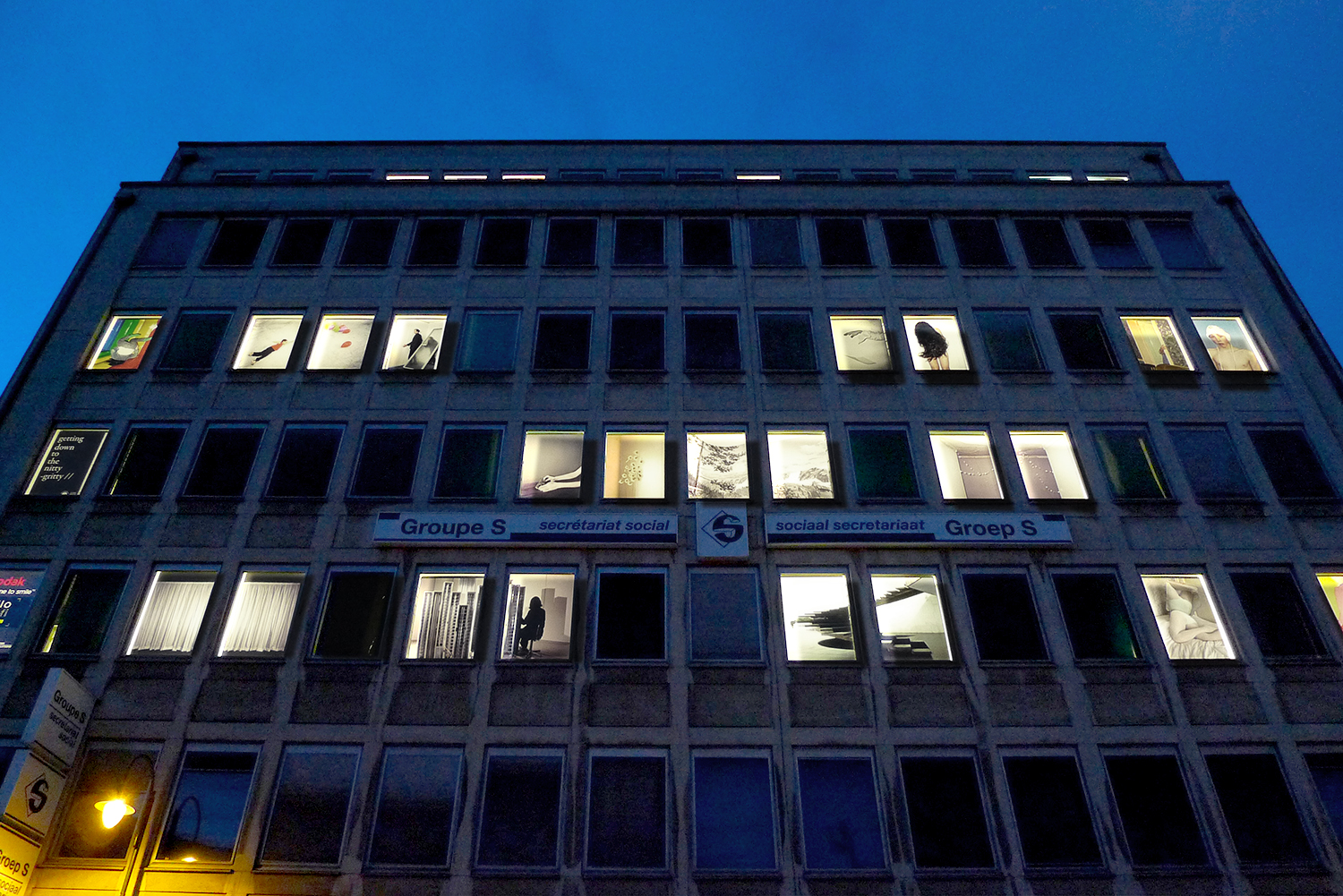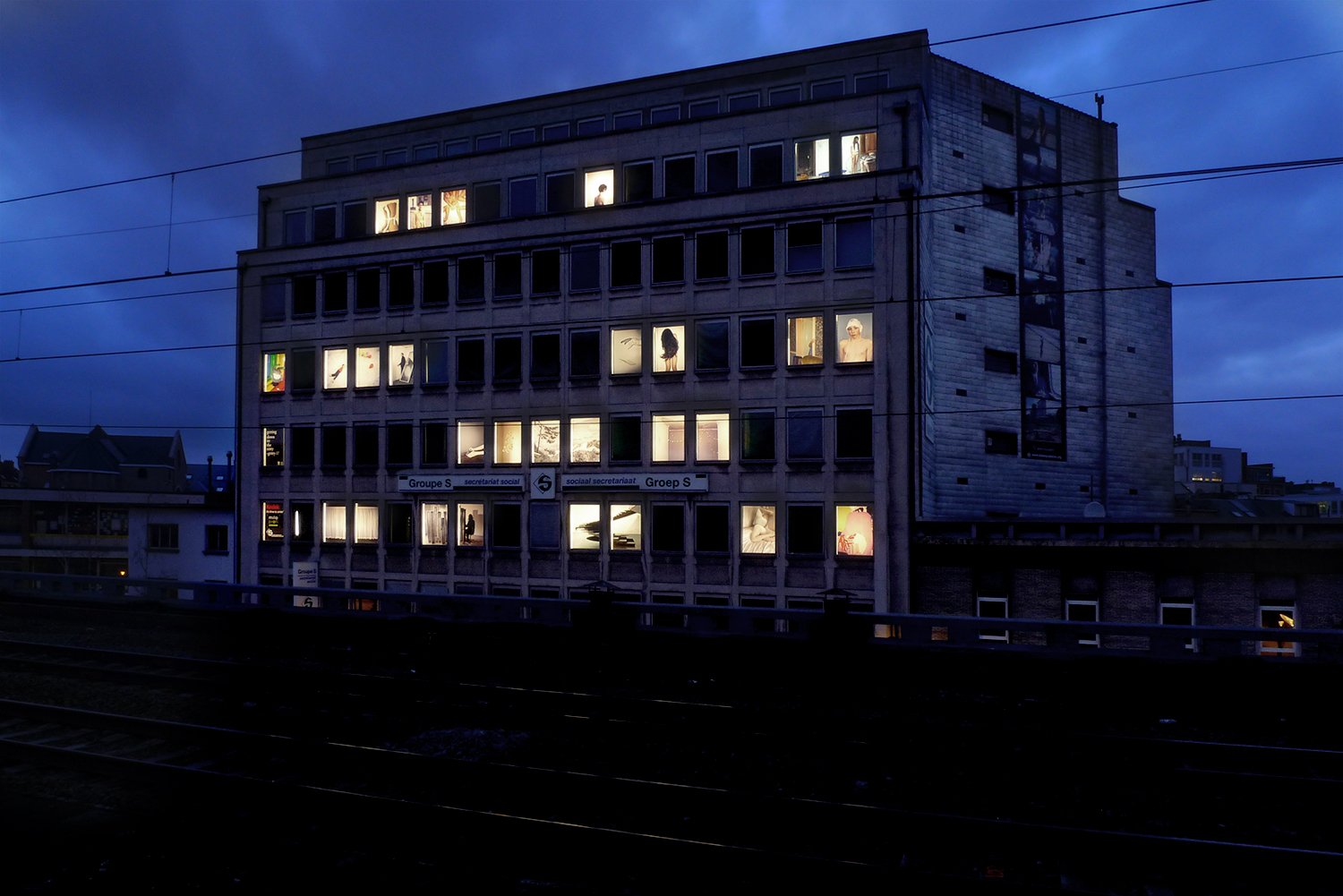Getting down to the nitty - gritty
A groupshow curated by Outlandish (Thierry Vandenbussche en Sarah Van Marcke) and Pierre Debroux at Gare de la Chapelle | Brussels from 14.01.2010 - 28.02.2010
...with: Anouk Kruithof, Charles Fréger, Elspeth Diederix, Bieke Depoorter, Sarah Van Marcke, Bernd Kleinheisterkamp, Sara Claes, Jan von Holleben, Dana Lauren Goldstein, Jimmy Kets, Pierre Debroux, Wyne Veen, Sarah Gerats, Jonathan Jacques
Outlandish - platform for young photography, is offered an exhibition space by Cultural Centre Recyclart for more then a year now. The space is located close to Quartier Les Marolles, in the Kapellenkerk train station, a place difficult to generate a large public since its located out of the larger urban axes of the centre of Brussels. Paradoxically, though the neighbourhood of the station is little frequented, thousands of commuters are passing on the train tracks running straight above the gallery space. This was the main trigger to organise this extra-muros exhibition. And so Outlandish engages to encounter the public space and to enlighten the neighbourhood with a backlit system to expose a selection of photographs, mounted in an empty office building close to the tracks. The exhibition will be visible when the sun is down, in the morning and in the evening. The exhibition, titled 'getting down to the nitty-gritty', offers to the commuters on the north-south axe a moment of respiration and escape on the trip that brings them to work, school or wherever they need to be. Sometimes playful, contemplative and open to multiple interpretations, the selected work questions the possibility to be creative with or to escape from the objects and actions from everyday life, the simple thing that really matters... the nitty-gritty...
Getting down to the nitty gritty
text by Devrim Bayar
Ok. So let's get down to the nitty gritty. In other words, let's get to the basics, the small details or the harsh truth. This is the proposal of this selection of photographs, ostentiously displayed on the facade of a downtown Brussels building located along the train lines. Presented as light boxes in front of the windows, the images appear like incidents that the passer-by or train traveller can see hastily. The exhibition presented as stolen moments in the public space is not only generous but also matches the content of the selected images: bits of nothing and everyday life coincidences that let our imagination wander.
The selection made by the Brussels photographer Pierre Debroux and the Antwerp collective Outlandish (Thierry Vandenbussche and Sarah Van Marcke) which promotes young Belgian photographers, brings together Belgian and foreign emerging, as well as established photographers. From the outset, their curatorial proposal puts forward the documentary nature of the images. No spectacular mise en scène or Photoshop acrobacy. Instead, simplicity and fragility dominate this visual world. In this sense, Dandelionby Elspeth Diederix could be the metaphor for the exhibition: an architecture of threads in which dandelions have been delicately placed, a frail and elegant construction that a breath alone could erase.
Other photographs use the architectural motif. On the ground floor, Anouk Kruithof has installed verticaly neons in an empty room, a device seemingly banal but whose shadow on the right side of the image resembles the Twin Towers. At a closer look, the objects around us are loaded with historical significance. The unfolding process (a construction of lamps) is nevertheless located at the foreground of the image. The artist thus signifies the artifice; she does not create an illusion per se but rather a narrative picture, in the sense that it generates narratives.
Similarly, Jan Vanholleben's Dreams of Flyingcreates the illusion of a flight without hiding the truth of the picture: a ground on which a child lays. His photograph of the hand and the sheet of paper also oscillates between a literal interpretation - the sheet falls from the open hand - and a figurative reading with magical shades - the sheet is suspended in the air by the "magnetic" attraction of the hand.
A number of photographs also play with a related duality, that of the here and the elsewhere. In this regard, Wyne Veen's cliché on the ground floor is probably the most obvious one. The curtains invade the image, pushing the narration offstage. On the third floor, the hand of an elderly woman leaning against the door is a "hook", not only physical but also visual. The hand draws our gaze. Yet, Jimmy Kets's image does not show us what takes place where the body stands and leaves our imagination fill this gap.
In the case of Bieke Deporteer, it's the photographer herself who wanders "elsewhere". The photograph of two girls browsing a picture book belongs to a series made in Russia where the artist travelled in the Trans-Siberian train with, as sole companion, a message written in Russian asking for one night of hospitality. The result of this courageous journey is a series that shows the extremely harsh conditions of life in Russian villages, but also the humanity of those who agreed to host a young foreigner.
Beyond the subject, the image plays with geometric forms: on the background, the wallpaper acts as a color surface on which the circles drawn by the hoop and the trampoline contrast with the rectangular shapes of the door and the closet. This formal play defines Dana Lauren Goldstein's portraits in a similar way, such as the naked girl whose hair sketches an abstract form in the air or the other one who tumbles into a world of colors.
Many photographs respond to each other in the exhibition. Through these multiple links, a real proposal takes shape. It's interesting to know that the expression « getting down to the nitty gritty » was first popularized by black militants in the Civil Rights movement (it may have referred to the gritlike nits or lice that are hard to get out of one's hair). In a very different context and with a renewed intention, the exhibition also takes a militant tone by inviting us to see differently, to open a poetic breach in our daily life, revealing new possibilities from these details and tiny bits of nothing that surround us.
Devrim Bayar

